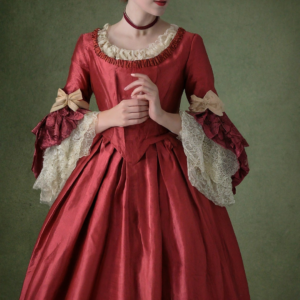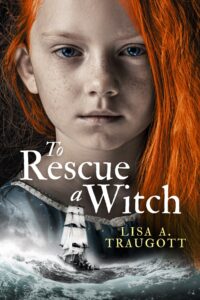How to Use Fashion in Literature
Everything you wear is a statement about yourself. This was doubly true for people in the 18th century. Clothing defined your gender, class and ethnicity as well as your personal preferences.
Fashion in Literature
Whether you are writing a novel or telling a story, the clothes a character wears can reveal a lot of information quickly. Consider the following:
Madame LaCroix’s assistants sewed Lady Margaret into her new robe à la française sack dress—in red, obviously.
vs.
Examining the choppers of a bone-thin woman in her early twenties, Alexander grimaced at the woman’s loose dress speckled with coarsely sewn patches.
Did you get a picture in your head of the two women? Who do you think had more power?
Consider wardrobe from head to toe. Lady Margaret would have had hair extensions molded and powdered by her ladies maids. The poor woman selling her teeth to make sends meet probably had messy hair braided, twisted and pinned to the back of her head. Lady Margaret would have worn silk heeled shoes while the beggar woman was barefoot.

Put Clothes In Motion
Don’t just describe a person’s outfit as though they were standing still, put them in motion. For example:
Her gloved hand pulled back the curtain.
vs.
She wore gloves.
Which description did you find more interesting?
Motion is particularly useful if you have a battle scene. Describing the uniform not only reveals the era, but also the person’s rank and their role in the fight. Can you picture black leather boots running through a snow-crusted field?
Weapons turn into an accessory of sorts. Is the sword dripping with blood or rusted from lack of use? Does the character check his flintlock pistol to discover there’s only one bullet left?
Hint At Their Psyche
Let your character’s clothes give your reader an insight into their minds. Is the jabot choking his neck during an uncomfortable meeting with the king? Does the silk of her mistress’ new dress feel softer than anything the scullery maid ever touched with her calloused hands?
In “To Rescue a Witch” the hero, William MacLeod, is a Scottish Highlander but at the start of the story he’s embarrassed by his home and desperately wants to emulate the English aristocracy. His clothes become almost another character in the story. At the start he’s in a long coat with a tricorn hat and by the end he’s wearing his clan tartan and yielding a claymore. But his fashion doesn’t take a linear path. Like most of us, he struggles against his own desires. In one scene he may don a kilt only to return to breeches in the next.

How Do Other Characters Respond?
In Nathaniel Hawthorne’s classic, “The Scarlet Letter” Hester Prynne is forced to wear a giant letter A to signify “adultery”. This one difference in clothing tells the reader she is a social outcast.
What about the fairy tale Cinderella? She is literally transformed from rags to riches and it changes her life forever. When she arrived in a gown with glass slippers not even her family recognized her.
If you are a Succession fan, who can forget Tom Wamsgans making fun of the “ludicrously capacious” purse Cousin Greg’s date carries? “What’s even in there? Flat shoes for the subway? Her lunch pail? I mean, Greg, it’s monstrous.”
Have fun when describing your characters’ clothes. Your reader will appreciate it!
How about you? What is your favorite character’s fashion? I’d love to hear in the comments below.
Here’s my novel (available on Amazon):

Copyright (c) Lisa A. Traugott. All rights reserved.